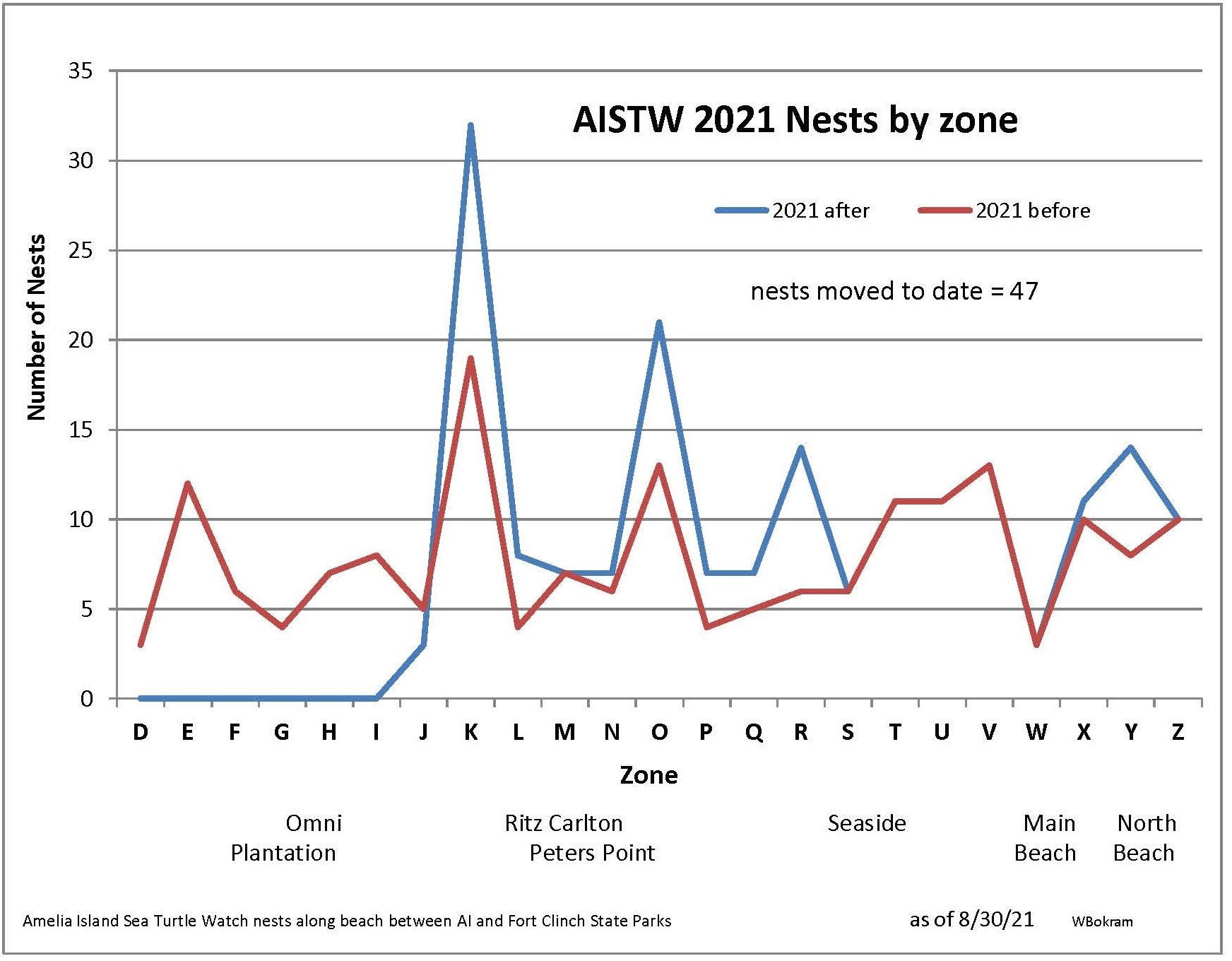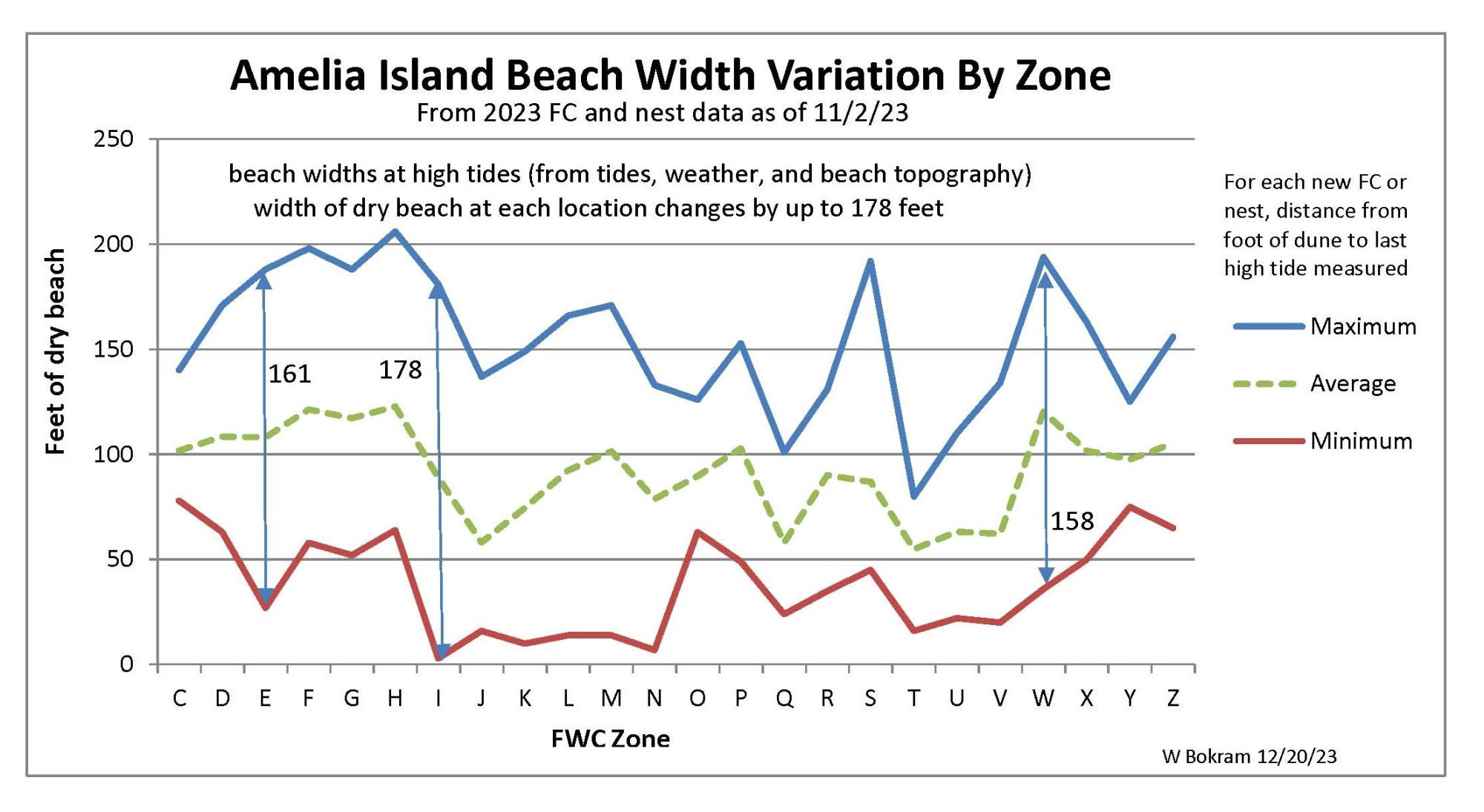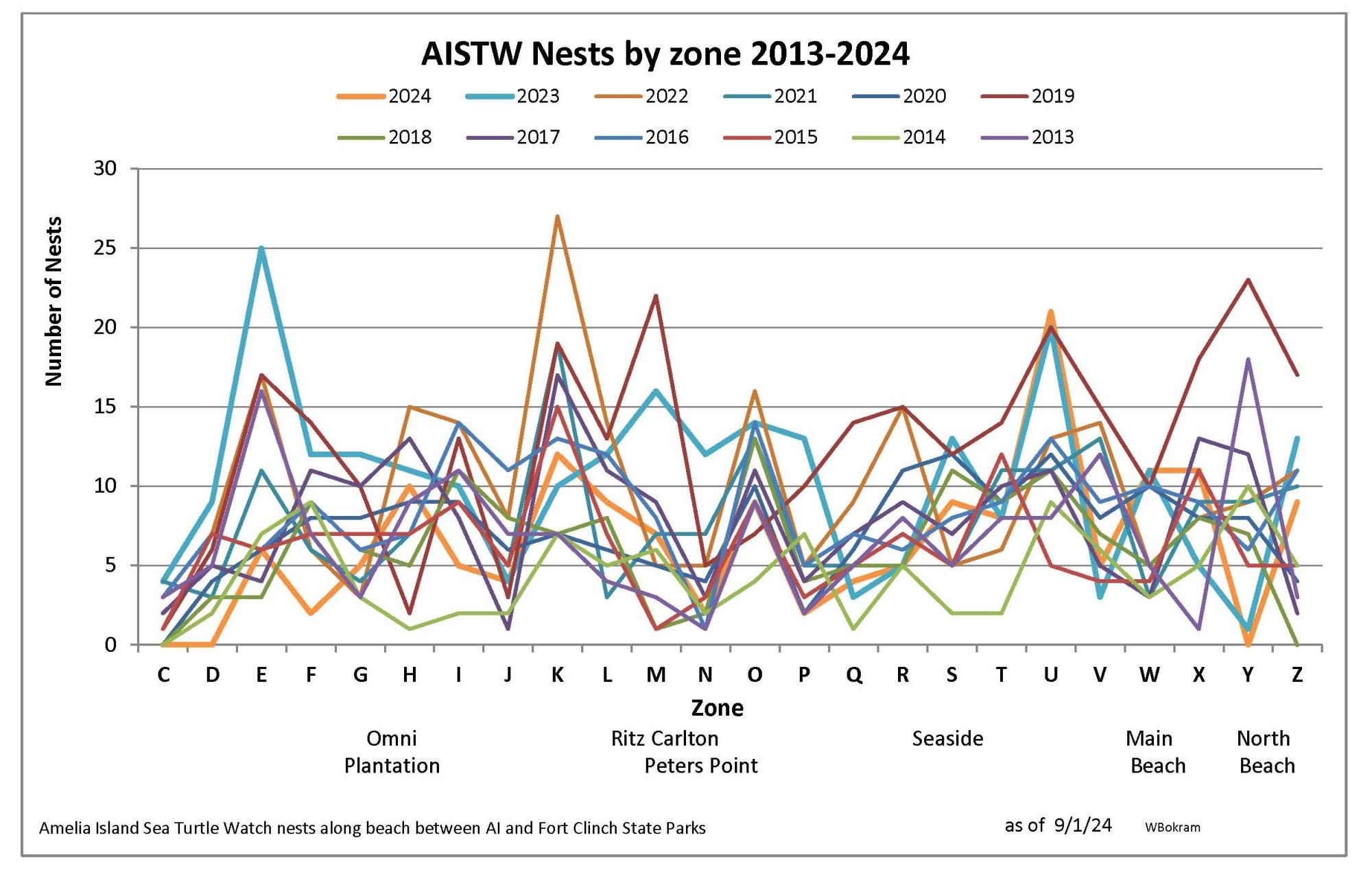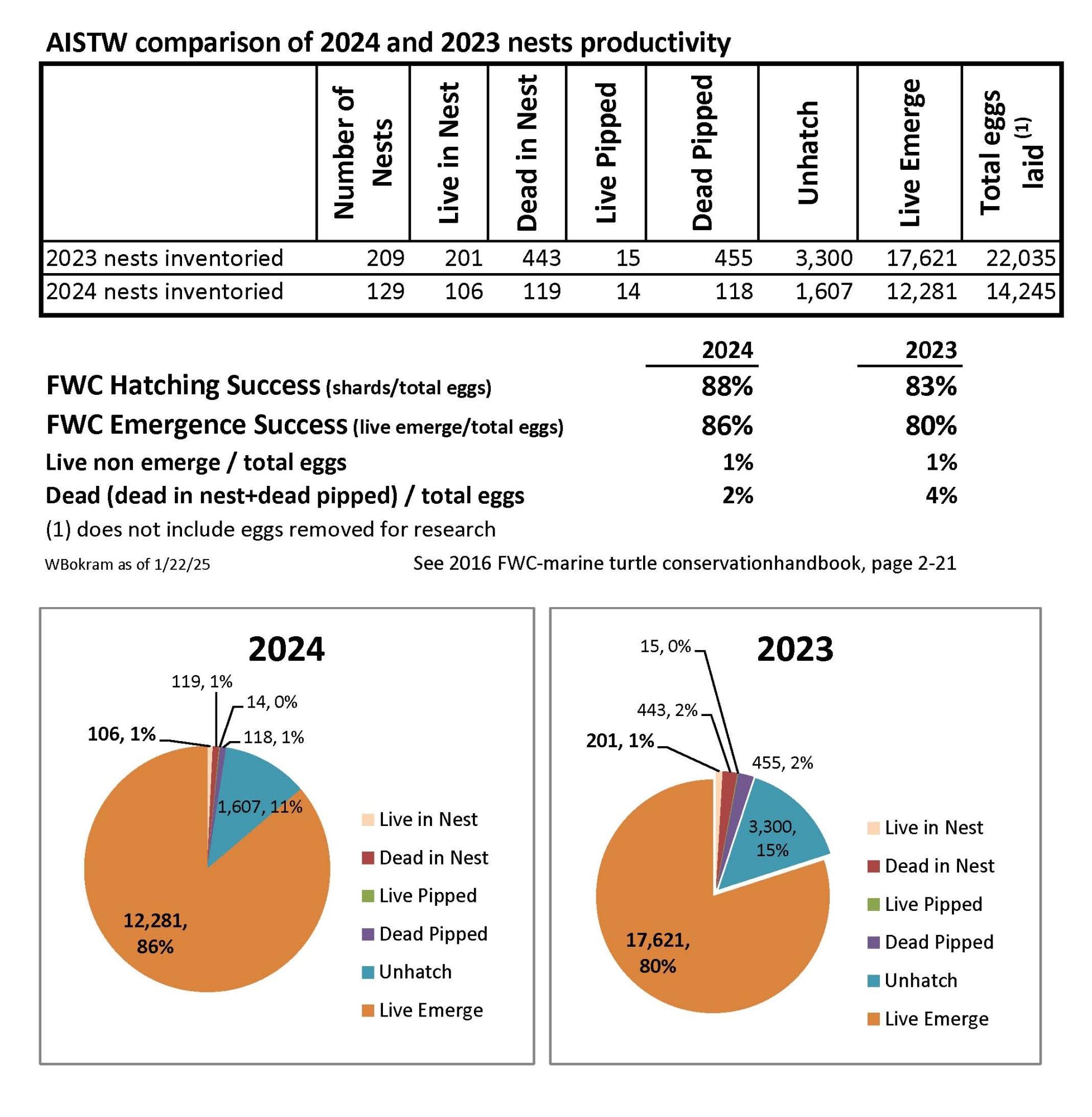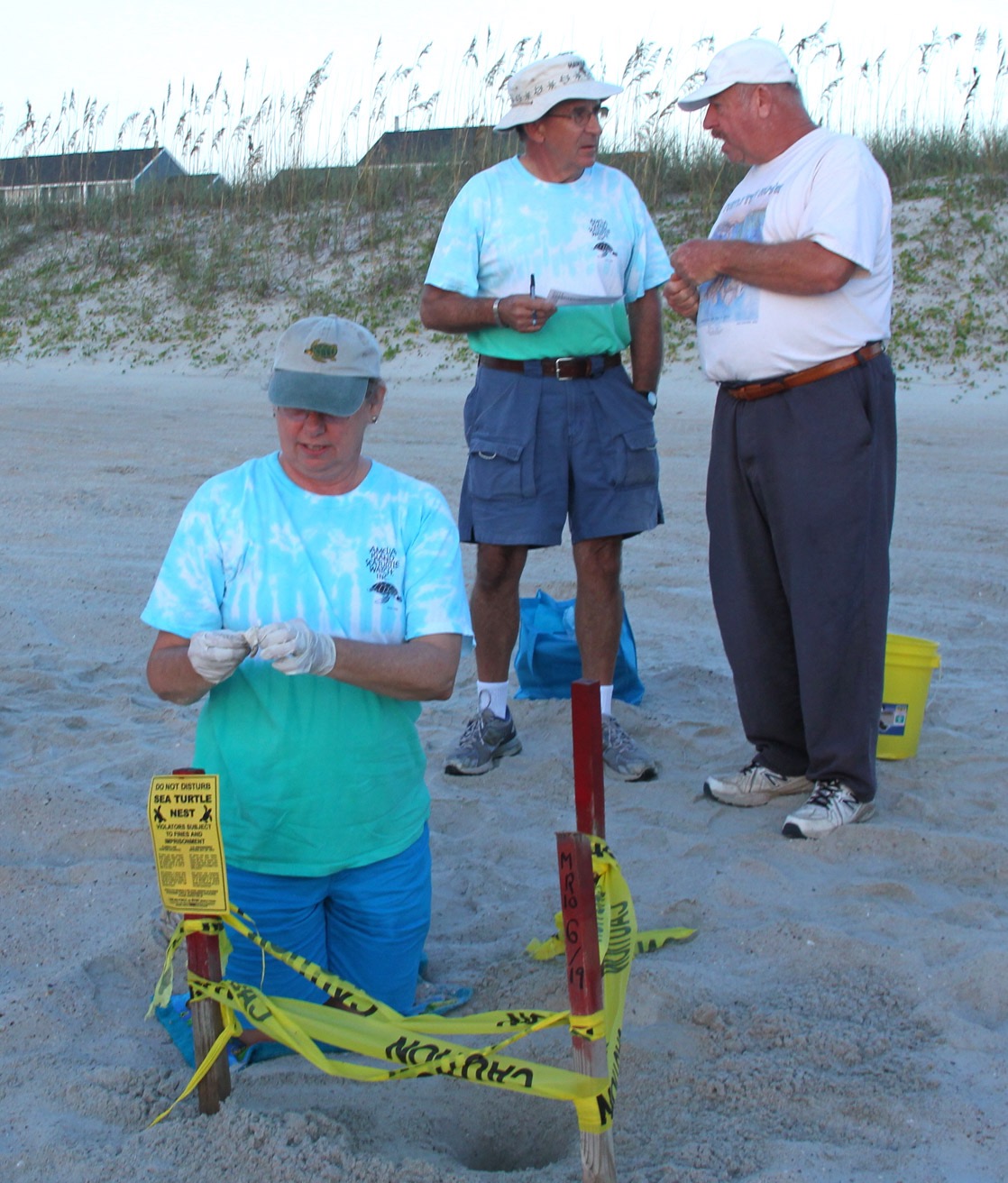

Comparison of 2020 to 2016 individual nest incubation periods
The temperature of each egg clutch is affected by weather and other factors that vary by location on the beach. This shows why it is very difficult to predict when a nest will emerge.
Florida-wide sea turtle nesting SNBS and INBS survey statistics
https://myfwc.com/research/wildlife/sea-turtles/nesting/
For DNA tracking of the sea turtles that nest on and near Amelia Island, see our
AISTW Genetics Research Page
The DNA tracking helps us better understand that our turtles pretty much do return to near where they were born, and how many times they nest in a season.
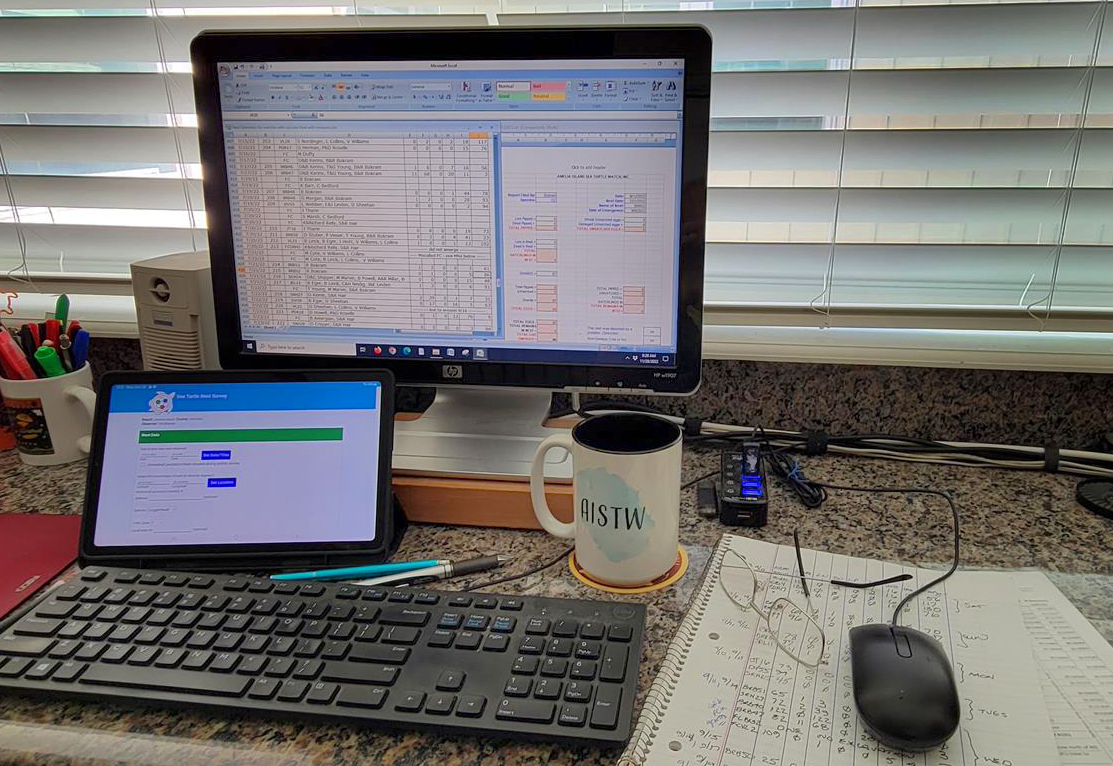
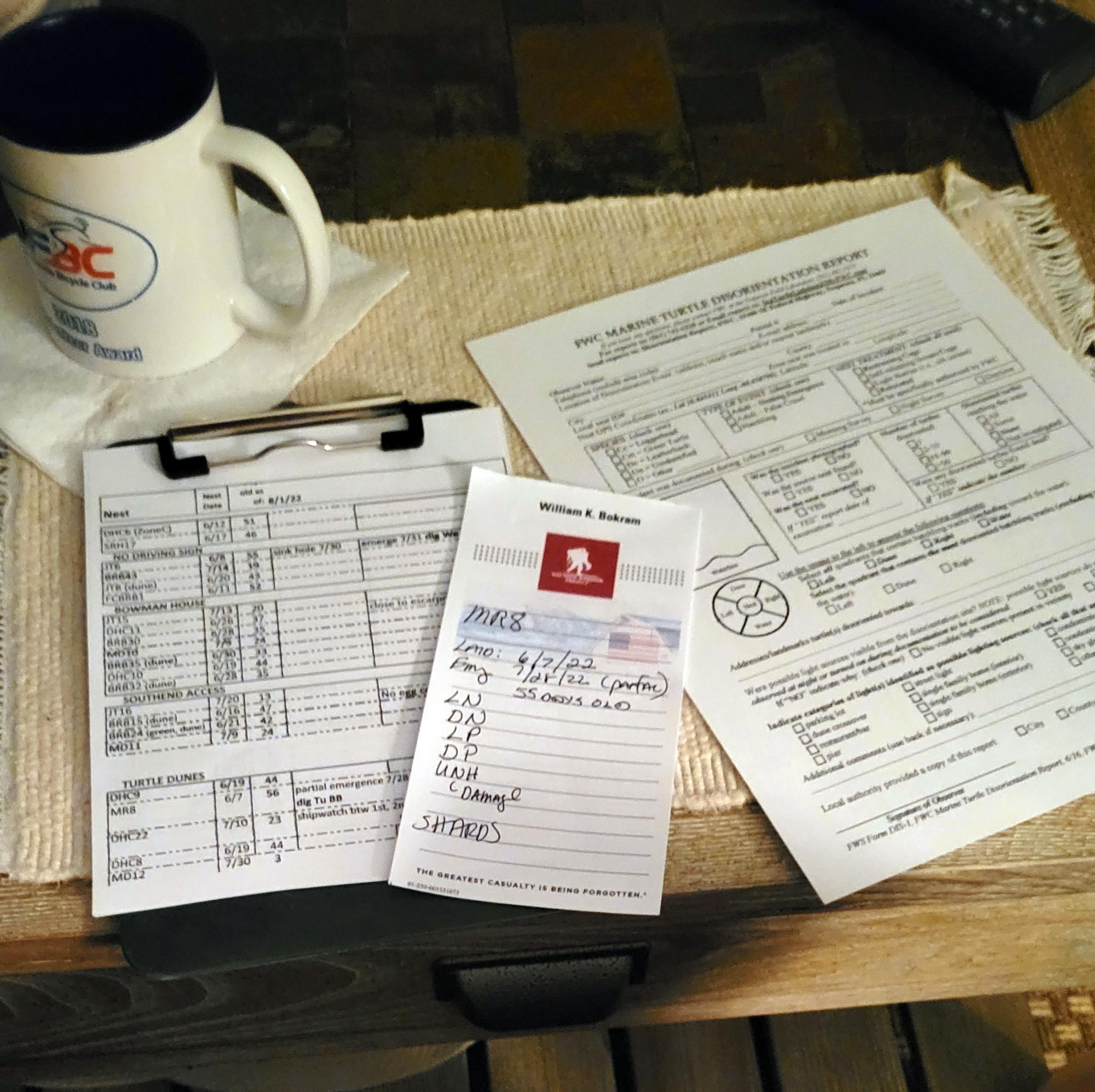
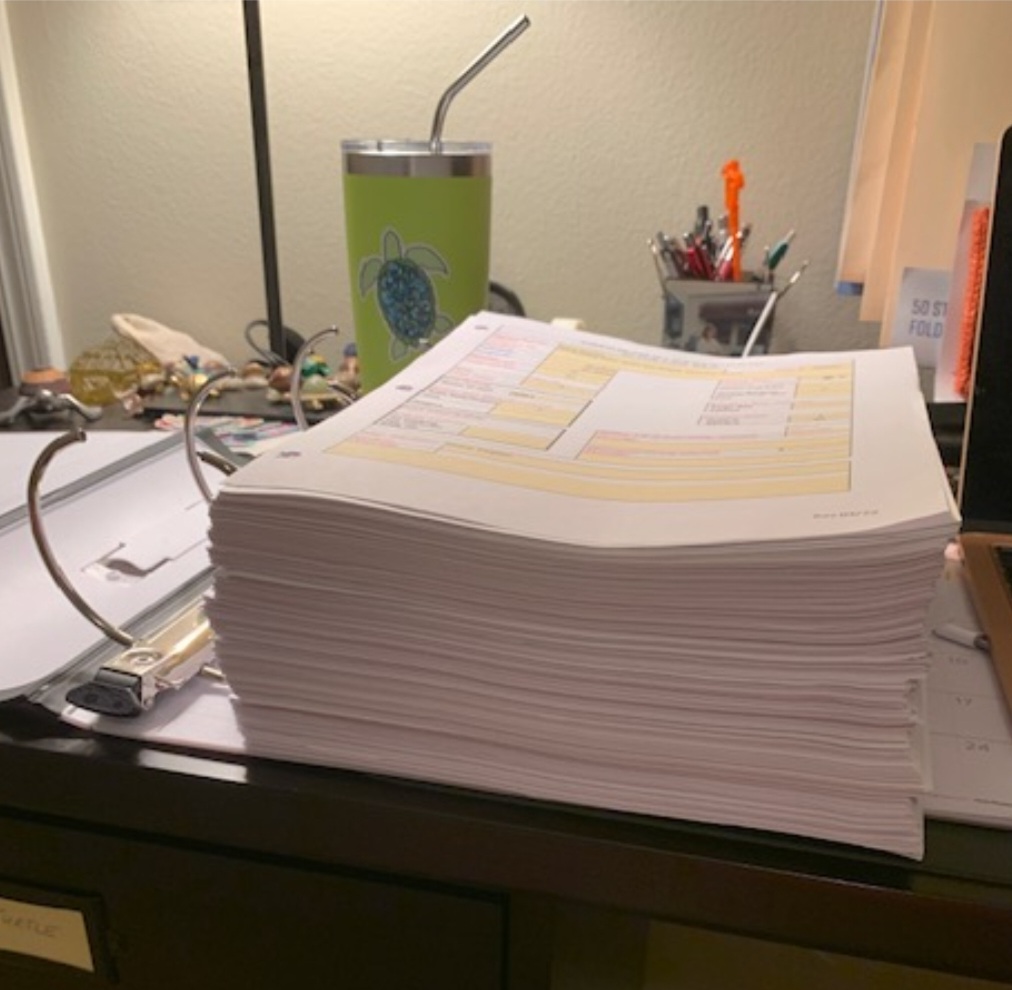
2016-2024 monthly average nest incubation periods
The temperature of the egg clutch determines the length of incubation, where warmer means shorter. This is why incubation is longer at the beginnig of the season.
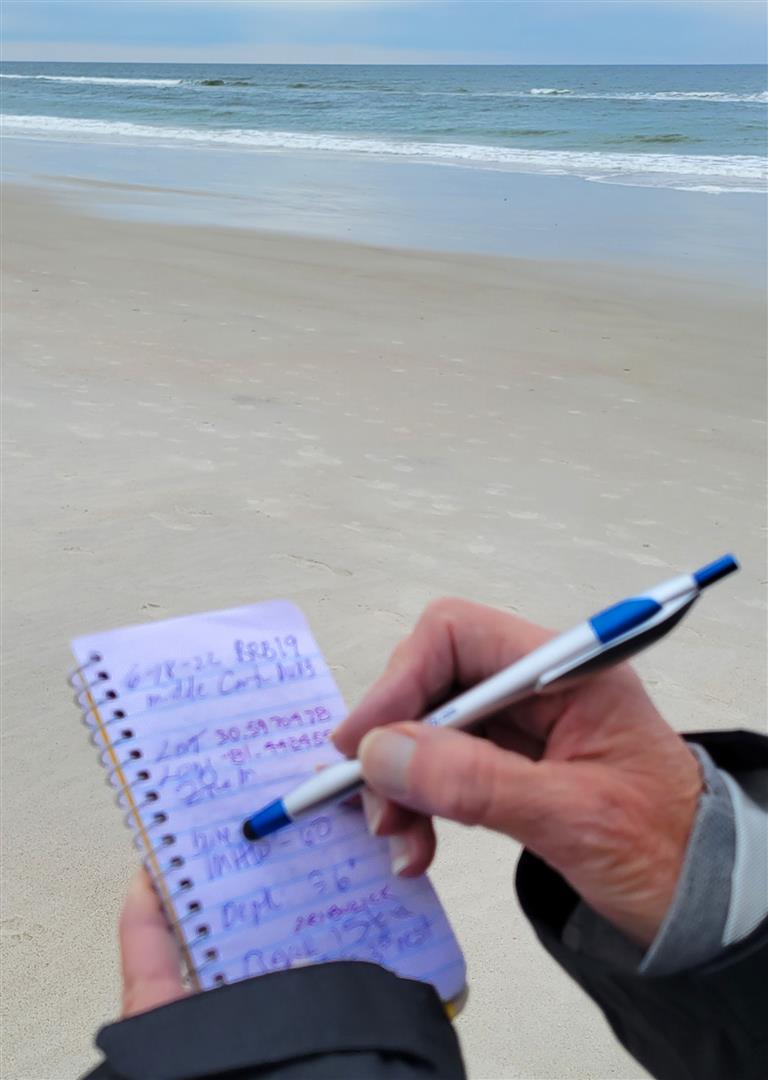
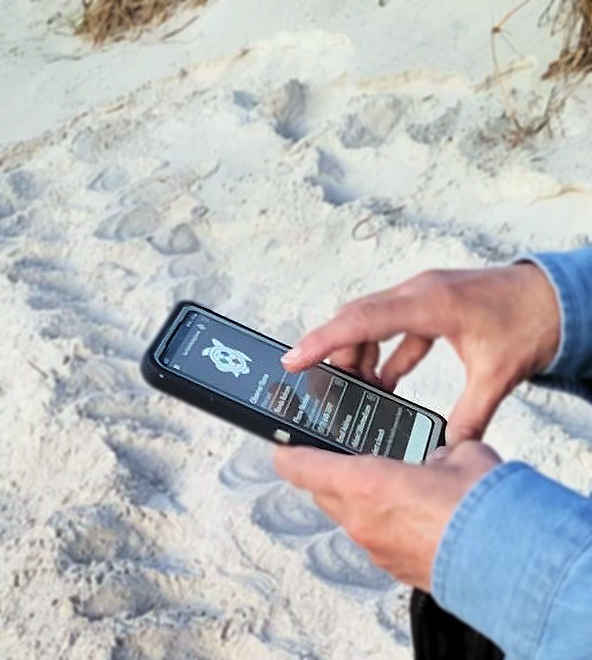
How much the different high tides affect the size of our beach. Tutles should, but don't always, know to lay above the highest tide


